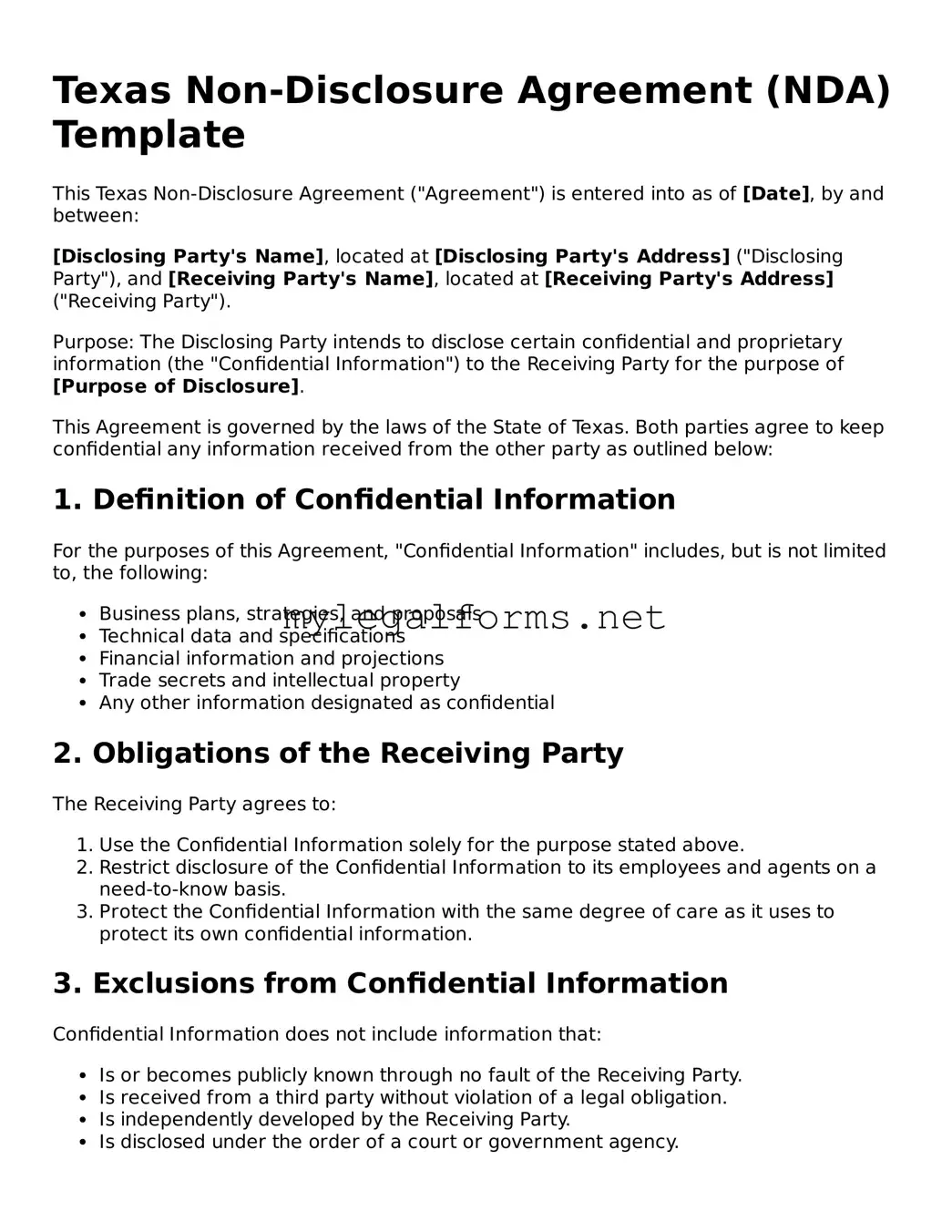Texas Non-Disclosure Agreement (NDA) Template
This Texas Non-Disclosure Agreement ("Agreement") is entered into as of [Date], by and between:
[Disclosing Party's Name], located at [Disclosing Party's Address] ("Disclosing Party"), and [Receiving Party's Name], located at [Receiving Party's Address] ("Receiving Party").
Purpose: The Disclosing Party intends to disclose certain confidential and proprietary information (the "Confidential Information") to the Receiving Party for the purpose of [Purpose of Disclosure].
This Agreement is governed by the laws of the State of Texas. Both parties agree to keep confidential any information received from the other party as outlined below:
1. Definition of Confidential Information
For the purposes of this Agreement, "Confidential Information" includes, but is not limited to, the following:
- Business plans, strategies, and proposals
- Technical data and specifications
- Financial information and projections
- Trade secrets and intellectual property
- Any other information designated as confidential
2. Obligations of the Receiving Party
The Receiving Party agrees to:
- Use the Confidential Information solely for the purpose stated above.
- Restrict disclosure of the Confidential Information to its employees and agents on a need-to-know basis.
- Protect the Confidential Information with the same degree of care as it uses to protect its own confidential information.
3. Exclusions from Confidential Information
Confidential Information does not include information that:
- Is or becomes publicly known through no fault of the Receiving Party.
- Is received from a third party without violation of a legal obligation.
- Is independently developed by the Receiving Party.
- Is disclosed under the order of a court or government agency.
4. Term
This Agreement shall remain in effect for a period of [Number of Years] from the date of execution, unless terminated earlier by mutual written consent of both parties.
5. Return of Materials
Upon termination of this Agreement or upon written request from the Disclosing Party, the Receiving Party will promptly return or destroy all materials embodying the Confidential Information.
6. No License
Nothing in this Agreement grants the Receiving Party any rights in or to the Disclosing Party's Confidential Information, except as expressly set forth herein.
7. Miscellaneous
This Agreement constitutes the entire agreement between the parties regarding its subject matter and supersedes all prior agreements and understandings. Amendments must be in writing and signed by both parties.
IN WITNESS WHEREOF, the parties hereto have executed this Non-Disclosure Agreement as of the date first above written.
Disclosing Party:
__________________________
[Name/Title]
Receiving Party:
__________________________
[Name/Title]
Each party acknowledges that they have read this Agreement, understand it, and agree to be bound by its terms.
